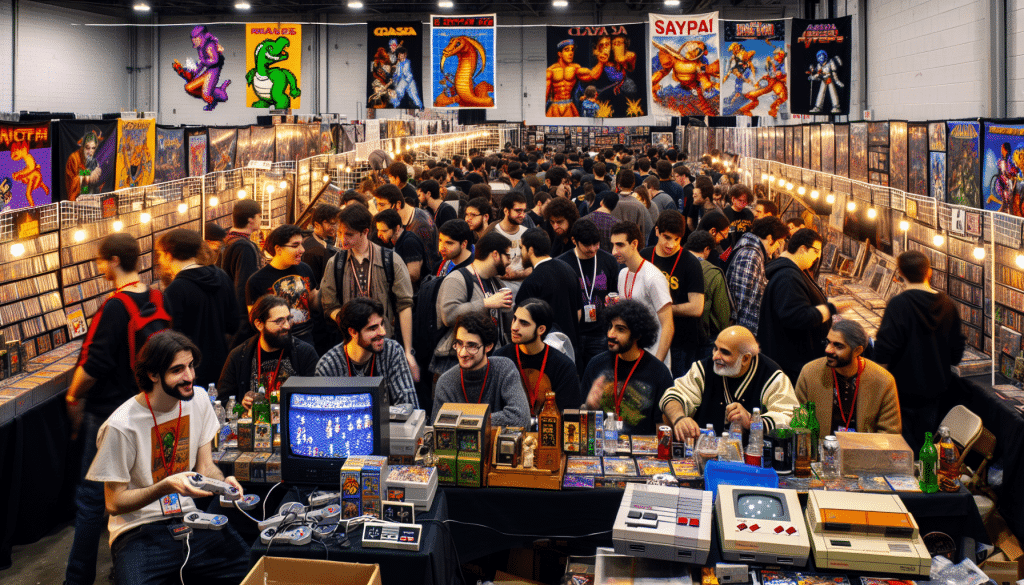Understanding the Basics of Augmented Reality in Advertising
It might sound like a phrase straight out of a science fiction novel, but Augmented Reality (AR) has become reality in the world of advertising. With tech-giants like Google and Apple investing billions into this area, it’s no wonder that advertisers are eagerly tapping into AR’s potential to create immersive and interactive experiences for consumers. But what exactly is AR and how is it used in advertising? Let’s delve in and break it down.
What is Augmented Reality?
Simply put, Augmented Reality is a technology that overlays digital information onto the real world. Using AR, you can superimpose images, sounds, and even smells onto your physical surroundings. This effectively creates a ‘mixed reality’, blending digital elements with the physical world. It’s like having the internet woven into your everyday life!
Imagine pointing your phone at a restaurant and instantly seeing reviews, menu items, and prices float above it. Or scanning a movie poster and watching the characters come to life. These are just a few examples of what AR can do.
AR in Advertising: A Game Changer
Advertising with AR is a whole new ball game. It represents a monumental shift from traditional forms of advertising, opening up new and exciting possibilities for both advertisers and consumers.
- Interactive Ads: AR allows advertisers to create highly interactive ads that engage consumers in ways traditional ads can’t. This can increase user engagement, brand recall, and ultimately, sales.
- Personalized Experiences: With AR, ads can be tailored to individual consumers. Think personalized recommendations based on your preferences, or ads that change based on your location.
- Enhanced Product Visualization: AR can bring products to life, allowing consumers to ‘try before they buy’. This can go a long way in helping consumers make informed purchase decisions.
Take IKEA’s AR app, for example. It allows you to see how a piece of furniture would look in your home before you buy it. Simply point your phone at the desired space, select a product from the IKEA catalog, and voila! You can see whether that coffee table really matches your sofa.
The Future is Here
The world of advertising is changing at a rapid pace, and AR is leading this change. It is not just about creating flashy ads, but about providing value, personalization, and immersive experiences. With advancements in technology, the possibilities are virtually limitless.
But remember, while AR can open up exciting new avenues, it’s important to use it thoughtfully. A poorly executed AR campaign can do more harm than good. So, take the time to understand your audience, be creative, and use AR to enhance, rather than replace, your advertising efforts.
Exploring the Role of Augmented Reality in Modern Advertising Campaigns
Advertising is a dynamic industry that is constantly evolving with technology. One of the latest trends redefining the advertising landscape is Augmented Reality (AR). AR is not just a fancy buzzword; it’s a powerful tool that’s changing the way businesses connect with their audiences.
What is AR in Advertising?
In simple terms, AR in advertising refers to the use of technology to create a bridge between the digital and the physical worlds. It allows businesses to overlay digital information – such as images, sounds, or text – onto real-world objects or places, providing a unique and interactive user experience.
The Power of AR in Advertising
AR offers a wealth of opportunities for advertisers. It’s like adding a new dimension to your marketing strategy, enabling brands to engage customers in a completely different and innovative way. Users aren’t just passive recipients of the message anymore. Instead, they become active participants in the advertising experience, interacting with your brand in a more meaningful way.
- Increased Engagement: AR experiences are interactive and immersive, leading to increased user engagement. The more engaged users are, the more likely they are to remember and interact with your brand in the future.
- Personalized Experience: AR can be tailored to individual users, providing a personalized and unique experience that can increase brand loyalty and customer satisfaction.
- Improved Conversion Rates: With AR, users can virtually try or experience products or services before purchasing, increasing their confidence in the purchase decision and thus improving conversion rates.
The Future of AR in Advertising
Experts believe that AR will continue to revolutionize the advertising industry. It’s still a relatively new technology, but it’s already proving to be a game-changer. And as technology advances and becomes more accessible, we can expect to see even more innovative uses of AR in advertising. It’s an exciting time to be in the advertising industry!
Takeaways
AR is much more than just a technological innovation; it’s a new way of connecting with audiences that allows for more engaging, personalized, and effective advertising campaigns. Whether you’re a small business owner or a marketing executive at a large corporation, AR can be a powerful tool in your marketing arsenal. So why wait? It’s time to embrace the future and start exploring the possibilities of AR in advertising!
Imagining Future Advertising: The Blend of Digital and Physical Worlds
As we step into the future, one thing is clear – advertising will never be the same again. The reason? The rapid integration of Augmented Reality (AR) into the world of advertising. Just imagine walking down a street and seeing your favourite brand’s advertisement come to life right in front of your eyes, or trying on clothes virtually before you buy them online. Sounds impossible? Not anymore.The Rise of AR in Advertising
Augmented reality is revolutionizing the way we understand and interact with advertisements. It’s effectively bridging the gap between the digital and physical worlds in a way that is changing how consumers engage with brands. Traditionally, advertisements were static – a billboard, a TV commercial, or a newspaper ad. But now, AR is making advertisements interactive, engaging, and personalized. With AR, advertising is not just about seeing, it’s also about experiencing.The AR Experience: A New Age of Interaction
Imagine scanning a print ad with your smartphone and seeing the product come to life, or pointing your phone at a restaurant and seeing real-time reviews or menu specials. This isn’t the future – it’s happening right now. AR allows consumers to engage with products before they buy them. For example, furniture companies now allow you to visualize how a piece of furniture would look in your home before you make a purchase. Similarly, cosmetic brands have AR apps that let you try on makeup virtually.The Future: Hyper-Personalized and Immersive Ads
Looking to the future, AR in advertising is set to become even more personalized and immersive. Imagine walking past a coffee shop and receiving a notification for a discount on your favourite drink. Or, imagine a clothing brand’s AR app recommending outfits based on your past purchases and your personal style. This level of personalization is what AR makes possible. Moreover, AR ads are expected to become more immersive and interactive. Instead of just watching an ad, consumers might be able to interact with the product, manipulate it, and even play games with it. This kind of engagement is not possible with traditional advertising mediums.Expert Advice: Embracing AR in Advertising
Leading industry experts suggest that brands should start experimenting with AR in their advertising strategies. According to AdWeek, “Brands that fail to incorporate augmented reality into their strategies risk falling behind in an increasingly digital world.” The key to successful AR advertising lies in creating an experience that is both enjoyable and beneficial for the consumer. Brands should focus on how AR can solve problems for their customers and enhance their product experience. In conclusion, AR is not just a trend, it’s the future of advertising. As we step into this future, brands and advertisers need to understand and embrace this powerful technology.Case Studies: Successful Use of Augmented Reality in Advertising
When we talk about the future of advertising, it’s impossible to ignore the growing role of Augmented Reality (AR). The innovative blend of digital and physical worlds is transforming the way brands interact with their audience. But rather than just talk about the potential of AR, let’s delve into some success stories of how brands have effectively used this technology in their advertising campaigns.
1. IKEA: A Virtual Furniture Showroom
Swedish furniture giant IKEA has been a pioneer in using AR for advertising. They launched an AR app, ‘IKEA Place’, which allows users to virtually place furniture in their home before purchasing. This innovative approach has not only made shopping more interactive but also helped IKEA boost sales and improve customer satisfaction.
2. Pepsi Max: Unforgettable Bus Shelter
Who could forget the Pepsi Max campaign that turned an ordinary London bus shelter into a viral sensation? Using AR, they created an illusion of a lion chasing a pedestrian, an alien invasion, and even a giant robot crashing through the street. This campaign not only grabbed headlines but also successfully increased brand recognition.
3. L’Oréal: Virtual Makeup Try-On
Cosmetics brand L’Oréal leveraged AR technology to let customers try on makeup virtually. This AR experience, available through their ‘Makeup Genius’ app, not only enhanced online shopping experiences but also significantly boosted product sales. It’s a brilliant example of how AR can bring tangible benefits to a brand.
4. Pokémon Go: A Global Phenomenon
This list would not be complete without mentioning the global sensation, Pokémon Go. While not a traditional advertising campaign, this AR-based mobile game took the world by storm in 2016. Its success showcased the potential of AR in capturing audiences’ attention and creating immersive experiences.
These examples demonstrate the power of AR in creating unique, immersive, and interactive advertising experiences. It’s clear that AR is much more than a buzzword – it’s a game-changing tool that can bring your brand and products to life in the eyes of your consumers.












